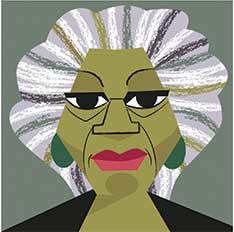Kinohi Nishikawa Studies Black Literature Through Book Design
The most important academic discovery that professor Kinohi Nishikawa made during graduate school was not on the campus of Duke University, where he was studying for a Ph.D. in literature, but at the local Black bookstore. The 1960s paperback novels he found at The Know Bookstore in Durham, North Carolina, led him to focus his scholarship on popular Black fiction, book history, and book design. “Black readers are a long-ignored but critically important constituency for publishers,” he says.
Nishikawa, an associate professor of English and African American studies, still scours eBay for old copies of novels so he can track the evolution of cover designs through the decades. Seeing how, say, Invisible Man by Ralph Ellison was packaged for different generations of readers “tells us a great deal about the evolution of the cultural dynamics of race,” he says.
Nishikawa’s Work: A Sampling

In his first book, Street Players: Black Pulp Fiction and the Making of a Literary Underground (The University of Chicago Press, 2018), Nishikawa examines the crime stories, conspiracy thrillers, prison novels, and Westerns written by Black authors from the 1960s to the 2000s. “This was Black people’s popular literature at the time, but few scholars have written about these books,” he says. Focusing on page-turners featuring Black protagonists that were issued by Los Angeles publisher Holloway House, the book explores how these novels were produced, received, and recreated over time and across different communities of readers.

Nishikawa’s current research focuses on the materials associated with packaging and marketing a book, such as the cover, jacket copy, and advertisements, which are known as the paratext. For the first edition of Passing by Nella Larsen, published in 1929, the publisher played up the sexual intrigue of the plot to appeal to a white readership. (The book was made into a Netflix program with the same name last year.) “A book’s design gives us a handle on contemporaneous readership and reception of the book,” he says. Later editions of Passing, he notes, highlighted the book’s racial themes to appeal to Black readers.

Nishikawa is collaborating with Autumn Womack, an assistant professor of English and African American studies, on a book of essays about the late Toni Morrison, who taught at Princeton for 17 years. Drawing on the Toni Morrison Papers at Princeton University Library, the book examines how Morrison’s archiving practices played a key role in her development as a writer, critic, and multimedia artist. This topic is part of a graduate seminar on Black archival studies currently being taught by the two professors.











No responses yet